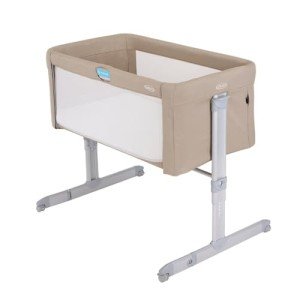14 Misconceptions Commonly Held About Bedside Cot For Nursing

The Benefits of Using a Bedside Cot for Nursing: A Comprehensive Guide
Over the last few years, the idea of co-sleeping, particularly using bedside cots, has acquired much attention amongst new parents and caretakers. A bedside cot is a type of baby bed that is designed to firmly connect to the side of an adult bed, supplying a safe sleeping environment for infants while promoting ease of access for breastfeeding mothers. This article will check out the different advantages of bedside cots for nursing, various types available, factors to consider for picking one, and often asked questions.
The Advantages of Bedside Cots for Nursing
1. Enhanced Accessibility
One of the most considerable advantages of a bedside cot is the ease of access it provides. Nursing mothers can simply reach over to get their baby without the requirement to stand up or move far from bed. This benefit enables for:
- Quick night feedings
- Increased convenience for the mom
- Reduced danger of disruptions to both mother and baby during nighttime care
2. Promotes Bonding
Nursing is more than simply a method of nutrition; it is likewise a chance for moms to bond with their infants. Bedside Crib For Babies facilitates this connection by permitting mothers to preserve close proximity to their babies during sleep. This closeness can result in:
- Enhanced emotional connection
- Increased milk production due to regular nursing
- A complacency for the infant
3. Encourages Extended Breastfeeding
The benefit of having a bedside cot motivates longer breastfeeding periods. Moms are more most likely to follow their baby's feeding hints and react quickly when they can quickly access their child. The benefits of extended breastfeeding include:
- Improved nutritional intake for the baby
- Boosted developmental benefits
- Reinforced immunities through breast milk
4. Supports Safe Sleep Practices
Bedside cots are created with security in mind, allowing parents to keep close guidance over their sleeping infant. By sticking to safe sleep suggestions-- such as placing the baby on their back to sleep and making sure a firm mattress-- parents can create a safer environment. Functions that add to safety may consist of:
- Breathable sides to prevent suffocation
- Sturdy, non-toxic products
- Adjustable heights to match the adult bed
5. Versatile Use
A bedside cot can function as both a crib and a co-sleeping arrangement. Lots of designs are adjustable in height or can be completely detached for use as a standalone crib when the child grows older. This flexibility provides long-lasting use and worth.
Types of Bedside Cots
Bedside cots come in different designs and designs. Below are some typical types:
| Type | Description |
|---|---|
| Co-Sleeping Cribs | Full-sized cribs that can be securely connected to the side of the parents' bed. |
| Bassinet-style Cots | Smaller, portable cots that fit beside the bed and are light-weight for easy transport. |
| Convertible Baby Beds | Cots that transform into different types of beds as the kid grows, typically including young child and youth bed alternatives. |
| Foldable Playards | These can be used as both a sleep location and a backyard, easily saved when not in use. |
Factors to consider When Choosing a Bedside Cot
When picking a bedside cot, parents should consider numerous crucial elements:
Safety Features
- Search for mesh sides for ventilation.
- Guarantee that the cot satisfies security requirements and policies.
Ease of Use
- Look for adjustable height settings to align with your bed.
- Think about how quickly the cot can be moved if required.
Size and Space
- Make sure there suffices space in the bedroom for the cot.
- Choose a crib that fits easily without taking too much room.
Portability
- If travel is regular, think about a light-weight model that can be quickly folded and carried.
Toughness and Material
- Choose top quality materials that offer sturdiness and are easy to clean.
Regularly Asked Questions
1. Are bedside cots safe for sleeping?
Yes, when used correctly and following security standards, bedside cots are generally safe for infants to sleep in. Always make sure that the cot is safely connected to the adult bed and that there are no spaces.
2. Can I use a bedside cot for a newborn?
Many bedside cots are created for newborns and can accommodate them securely. Always check the maker's recommendations for weight limits and age viability.
3. How can I guarantee my baby's security while using a bedside cot?
To make sure safety, constantly place your baby on their back to sleep and regularly examine that the cot is safely connected to your bed. Maintain a clutter-free sleeping environment.
4. When should I transition my baby from a bedside cot to a crib?
Constantly, parents shift their kid to a crib when they are around 4 to 6 months old or when they begin to roll over frequently. Nevertheless, the specific timing depends upon the baby's development.
5. Can I use a bedside cot for numerous babies?
Bedside cots are normally developed for single infants. If parents have twins or multiples, it's advised to use different sleeping arrangements to make sure safety.
Bedside cots use lots of benefits for nursing moms, including ease of access, security, and promoting a strong bond between mom and kid. By picking the right type of bedside cot and thinking about safety features, parents can create a nurturing environment for their infants. As the trend of co-sleeping continues to increase, offering a safe and reassuring setup is vital for the wellness of both baby and caretaker. With the best info and resources, parents can browse this new chapter in their lives much better prepared than ever.

